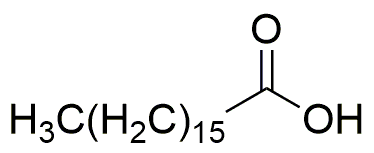Heptadecanoic acid is widely utilized in research focused on:
- Food Industry: This fatty acid is used as a flavoring agent and preservative in various food products, enhancing taste while maintaining freshness.
- Cosmetics: It serves as an emollient and thickening agent in creams and lotions, providing a smooth texture and moisturizing benefits for skin care products.
- Pharmaceuticals: Heptadecanoic acid is explored for its potential therapeutic properties, particularly in formulations aimed at improving lipid profiles and metabolic health.
- Biotechnology: It is utilized in the production of biodiesel and biofuels, offering a renewable energy source that can help reduce carbon emissions compared to fossil fuels.
- Research Applications: This compound is often used in studies related to fatty acid metabolism, helping researchers understand its role in human health and disease.
General Information
Properties
Safety and Regulations
Applications
Heptadecanoic acid is widely utilized in research focused on:
- Food Industry: This fatty acid is used as a flavoring agent and preservative in various food products, enhancing taste while maintaining freshness.
- Cosmetics: It serves as an emollient and thickening agent in creams and lotions, providing a smooth texture and moisturizing benefits for skin care products.
- Pharmaceuticals: Heptadecanoic acid is explored for its potential therapeutic properties, particularly in formulations aimed at improving lipid profiles and metabolic health.
- Biotechnology: It is utilized in the production of biodiesel and biofuels, offering a renewable energy source that can help reduce carbon emissions compared to fossil fuels.
- Research Applications: This compound is often used in studies related to fatty acid metabolism, helping researchers understand its role in human health and disease.
Documents
Safety Data Sheets (SDS)
The SDS provides comprehensive safety information on handling, storage, and disposal of the product.
Product Specification (PS)
The PS provides a comprehensive breakdown of the product’s properties, including chemical composition, physical state, purity, and storage requirements. It also details acceptable quality ranges and the product's intended applications.
Certificates of Analysis (COA)
Search for Certificates of Analysis (COA) by entering the products Lot Number. Lot and Batch Numbers can be found on a product’s label following the words ‘Lot’ or ‘Batch’.
*Catalog Number
*Lot Number
Certificates Of Origin (COO)
This COO confirms the country where the product was manufactured, and also details the materials and components used in it and whether it is derived from natural, synthetic, or other specific sources. This certificate may be required for customs, trade, and regulatory compliance.
*Catalog Number
*Lot Number
Safety Data Sheets (SDS)
The SDS provides comprehensive safety information on handling, storage, and disposal of the product.
DownloadProduct Specification (PS)
The PS provides a comprehensive breakdown of the product’s properties, including chemical composition, physical state, purity, and storage requirements. It also details acceptable quality ranges and the product's intended applications.
DownloadCertificates of Analysis (COA)
Search for Certificates of Analysis (COA) by entering the products Lot Number. Lot and Batch Numbers can be found on a product’s label following the words ‘Lot’ or ‘Batch’.
*Catalog Number
*Lot Number
Certificates Of Origin (COO)
This COO confirms the country where the product was manufactured, and also details the materials and components used in it and whether it is derived from natural, synthetic, or other specific sources. This certificate may be required for customs, trade, and regulatory compliance.

